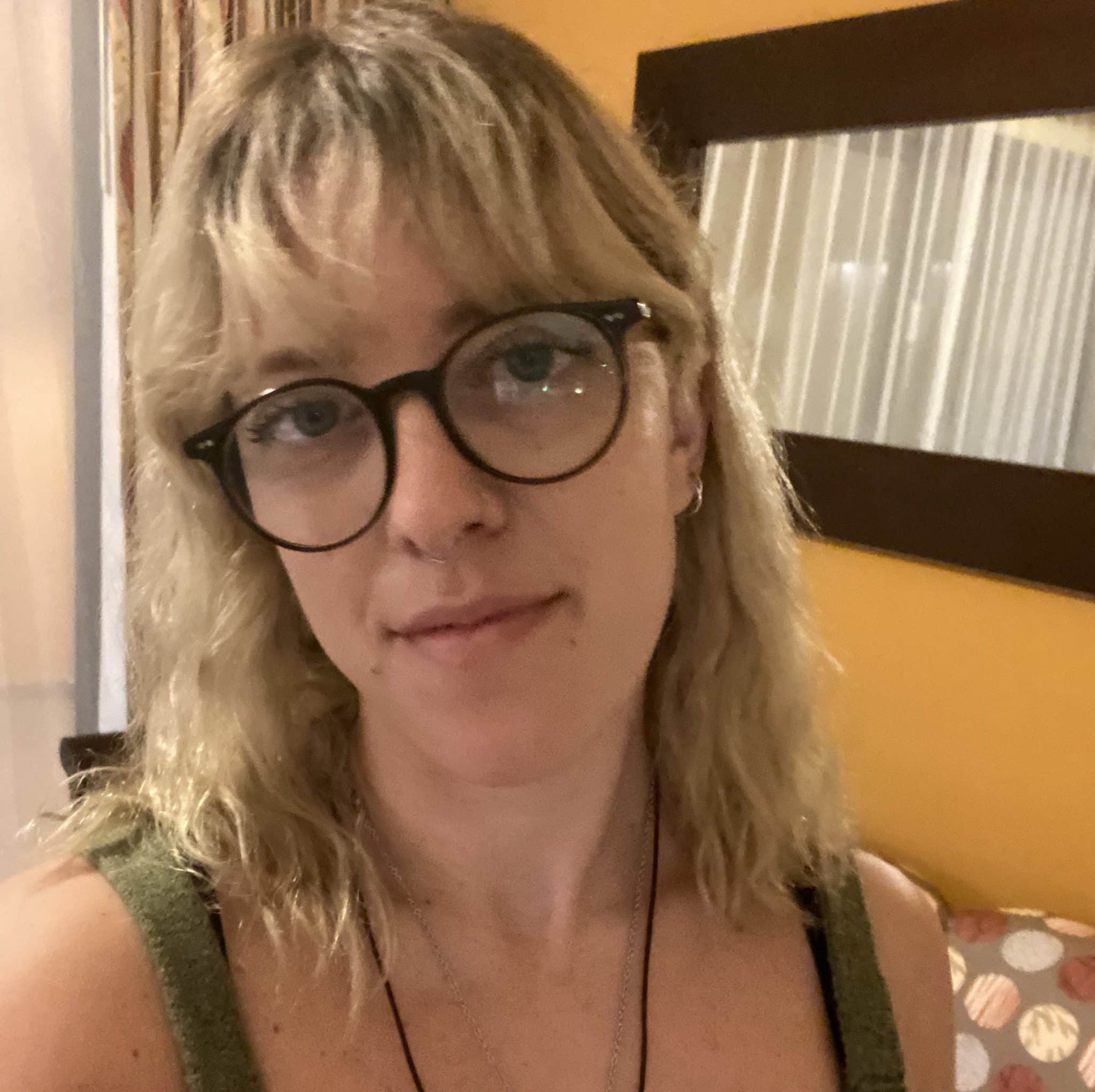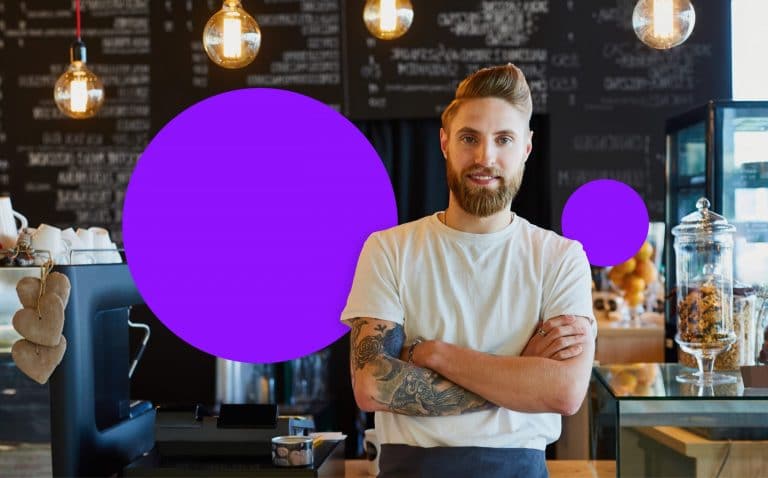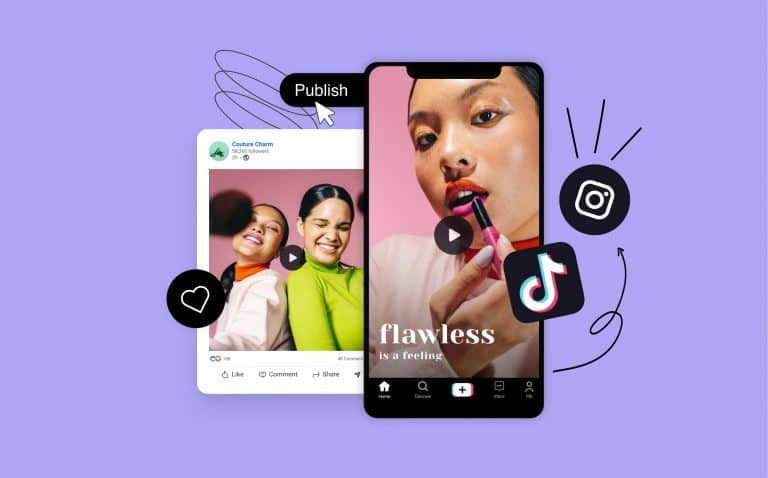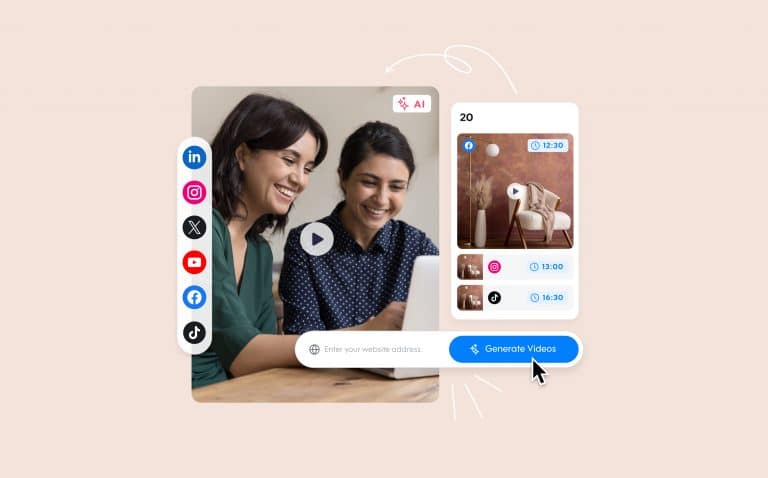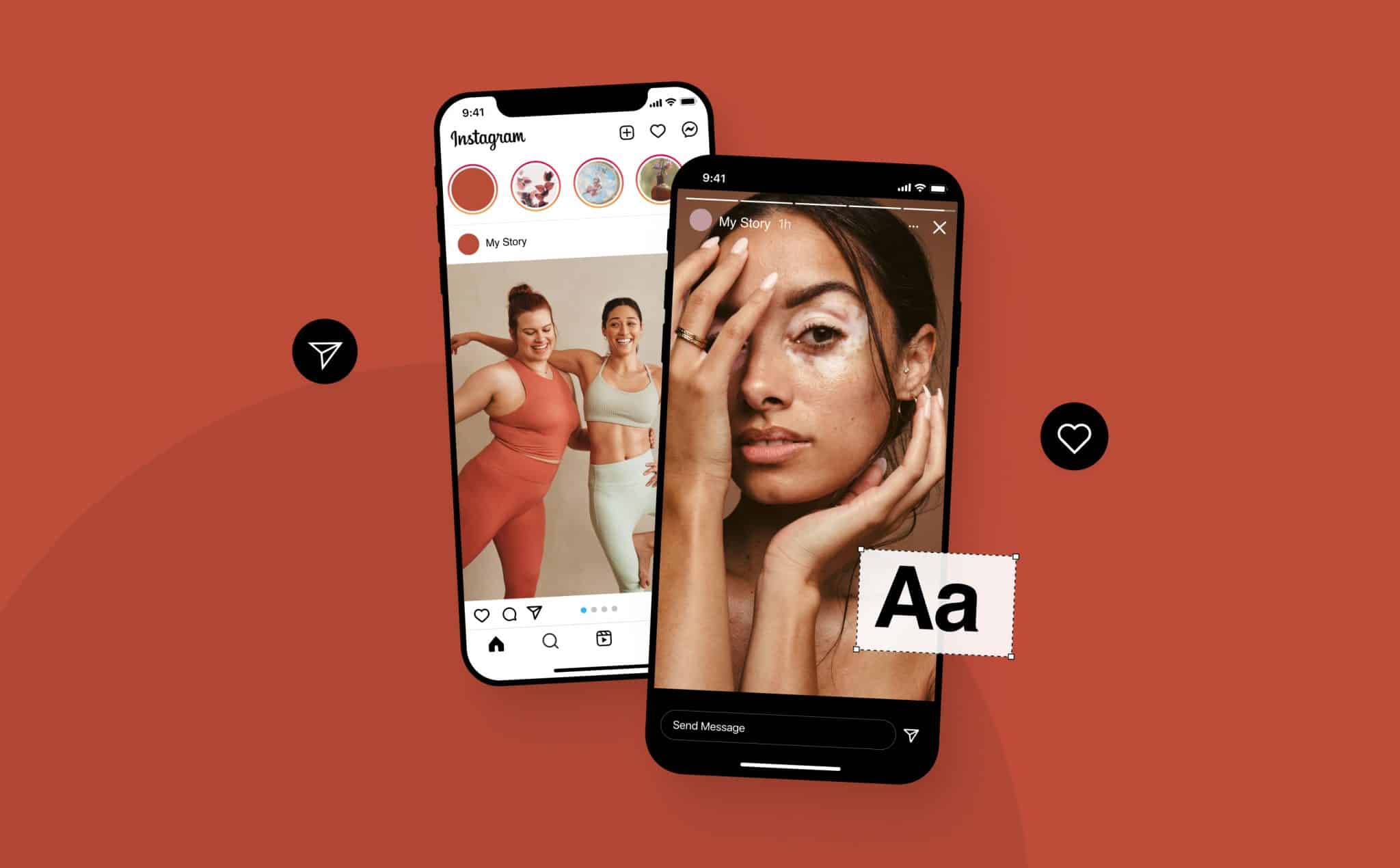
9 Brands Winning With Inclusive Marketing (and How You Can Too)
As a small business owner in 2022, your job involves more than just leading a business to success. Today, we understand that our business practices have a much broader impact than only on us. Take your marketing, for example.
If all of your ads and marketing content are targeted toward and include images of exclusively people who look like you, what kind of message does it send to consumers who come from a different background? Now imagine how diverse audiences would feel to see themselves included in your visual marketing materials. Probably much more welcome and valued, both to your brand and the world at large. Right?
A 2020 census in the US revealed that 53% of Americans under the age of 18 are multi-racial, and these up-and-coming consumers will be your future customers. But only if they feel included.
Starting to pay more attention to diversity in your content marketing will play a significant role in helping you grow your brand and becoming a more socially responsible business. According to a study done by Microsoft, 76% of consumers are more likely to support authentic brands in their advertising. For larger businesses, 69% of brands with representative ads see an average stock gain of 44% between 2020 and 2021.
In 2020, Nike won inclusive marketing with their “You Can’t Stop Us” campaign. The ad celebrates sport and the similarities shared by athletes around the world. 24 sports, 53 athletes, and 72 clips combine movement, inclusivity, and diversity to create this remarkable video.
So, if you want to join the world’s most successful brands in harnessing the power of inclusive marketing to make your business a positive force in the world while also benefiting your bottom line, read on to learn how.
What Is Inclusive Marketing?
Inclusive marketing considers, includes, and embraces people from various backgrounds and demographics. This means people of all races, ages, genders, incomes, sexualities, abilities, immigration statuses, religions, and language backgrounds, among other things.
There are multiple ways to approach inclusive marketing. One is to create marketing campaigns that explicitly aim to call diversity and inclusion essential, directly forefronting these matters. Think of, for example, Dove’s “Real Beauty” campaigns with slogans like “None of these women are hair models. After all, neither are you.”
Another approach is to use images of people of diverse backgrounds, representing diversity as a reflection of the real world without making it the ad’s focus. A classic example of this is Coca-Cola’s famous 1971 hilltop ad, in which it included 65 people of different races and nationalities singing in harmony (about Coke, of course).
This groundbreaking campaign is an early (and very successful) example of inclusive marketing. Over 100,000 people sent in letters to Coca-Cola praising the ad – showing just how powerful, inclusive marketing can be.
Become More Inclusive in Your Marketing With These Five Simple Tips
As you will soon see from the examples below, there are many different ways to implement inclusive marketing. That being said, inclusive marketing isn’t reserved only for big brands; in fact, there are many simple ways to incorporate it into your content. While you don’t need to tackle this marketing strategy from all its angles, there are some things you can do to be a little more inclusive in your content.
To make it a bit simpler, here are five essential tips you can follow from now on with your marketing campaigns that will help them be more inclusive.
Take a Deeper Look at Your Consumers
While you may think you got your customer base nailed to the tee, there may be some customers going unnoticed. Until you do the research, you won’t necessarily know who your customer base is. Tap into your social media and advertising analytics to see who your audience demographics are. What age groups, races, and genders follow your accounts?
Maybe your audience is more diverse than you even realized. Knowing this information will empower you to represent them in your marketing to feel recognized and celebrated by you.
And if your analytics reveal that your customers are actually not diverse at all, this is an essential indicator that it’s even more critical for you to invest in inclusive marketing so that you don’t miss out on these essential demographics.
Be Diverse In Your Visual Content
To make content that represents our world in all of its beautiful diversity, you’re going to need footage that reflects it. Promo offers a stock footage library with over 110 million assets from Getty Images and iStock rich with footage of people of all ages, religions, races, genders, body types, and more.
By using Promo to create marketing videos for your small business, you’re able to create inclusive content that showcases and celebrates people of all backgrounds. As a result, your audience will be able to see themselves reflected in your marketing materials, helping them to feel included and embraced. And your small business will be able to benefit from the brand trust, preference, and loyalty that comes with inclusive marketing.
Celebrate Multi-cultural Occasions
Inclusive marketing goes beyond just recognizing the existence of diversity to actually embracing and celebrating it. Because it’s one thing to feel seen, it’s even more meaningful to feel that the brands you follow and the businesses you buy from seeing all of the beauty that exists in your community.
Whenever possible, create marketing assets like social media posts and even full-on ad campaigns that celebrate occasions like:
- Pride Month
- Black History Month
- Kwanzaa
- Hanukkah
- Diwali
- Ramadan
And try to go past the major holidays and get creative. Just to give you some ideas, maybe you can also celebrate:
- The anniversary of the Stonewall riots
- The lunar new year
- Juneteenth
- Indigenous Peoples’ Day
- Cesar Chavez Day
- Mental Health Awareness Month
While it may seem complicated to keep up with lesser-known holidays and occasions, it doesn’t have to be. With Promo, you have the power to use ready-made templates created specifically for these dates. Use our social media calendar with templates made for every day of the year – even days you didn’t think you would include in your marketing…until now!
Create Discussions
When it comes to inclusive marketing, one easy mistake to make is to position yourself as an expert who has diversity and inclusivity all figured out. Nobody has all of the answers – and that’s okay. Because the truth is that true allyship and authentic inclusivity are a constant learning process.
To continue learning and growing with your customers, think about how you can educate, engage, and invite your audience to an open conversation about inclusivity. Offer opportunities for your diverse customers to share their experiences with you. Stay up to date as the cultural exchange continues and shifts. It’s an ongoing process, but it’s an important one to participate in, encourage, and remain committed to.
Make Your Digital Assets Accessible
When creating your marketing materials, as well as any other assets associated with your business, like your company website, always ask yourself, “How accessible is my content to people with disabilities?” Because without even realizing it, you can be excluding people with things like visual or hearing impairments.
Some things to keep in mind when it comes to accessibility include:
- Use contrasting colors in your designs so that color-blind people can make them out
- Use easily readable fonts
- Caption your videos
- Use clear headings in your blog posts to help readers with limited short-term memory, low vision, or difficulty reading text
- Avoid flashing animations that can cause seizures
- When including text in videos, make sure that it stays on screen long enough for all people to read
9 Brands Winning Inclusive Marketing
So no that you know how to get started with more diverse marketing, here are examples from seven brands doing it beautifully.
Etsy
What they did: Online marketplace Etsy’s 2020 “gift like you mean it” holiday campaign is an excellent example of inclusive marketing. For the campaign, they created three videos highlighting different examples of how gifts purchased on Etsy can make people of diverse backgrounds feel seen.
For example, in this ad, a girl named Shiori, who usually struggles to find her name represented in gift shops or correctly pronounced by teachers, is touched to receive a personalized name necklace from her parents.
What we can learn from them: Etsy’s campaign is so successful because, in addition to showing that they care about diversity, it also indicates how their business can be a part of making people feel more included.
Can you think of any use cases for how your small business might make a person feel seen or understood? For example, maybe your t-shirt company creates shirts without any tags on the inside so that people on the autism spectrum who experience sensory overstimulation can comfortably wear them. If you offer something like this, highlighting it in a marketing campaign is a great idea.
Gillette
What they did: In this 2019 ad, Gilette highlights the role of their product, a shaving razor, in creating a meaningful bonding experience between an African American father and his transgender son.
What we can learn from them: What makes this ad so great is that it shows Gilette’s customers that their products are for everybody regardless of race or gender. Not only can Black and trans audiences feel represented and seen by watching this ad, but they’ll also understand that Gillette’s products are made for them, too.
What you can take away from this example is that, while it might be evident for you that anybody of any background can use your product, this might not be as clear to your audiences if you don’t show them that this is the case. Creating marketing materials in which you explicitly offer people of different races, genders, sexualities and using your product will invite diverse customers to try what you make.
Essie
What they did: To celebrate Pride month in 2019, nail polish brand Essie made Jonathan Van Ness, star of Netflix’s Queer Eye series, their first nonfemale brand ambassador, highlighting them in a new ad campaign showcasing their polishes.
What we can learn from them: As a queer, non-binary person, Van Ness is a proud representative of the LGBTQ+ community, and choosing them to represent their brand functioned as a show of support from Essie of this demographic. It also invited people of different genders and sexualities to use their product, which is traditionally associated with only women.
If you find that your business is typically used only by one demographic, you can use inclusive marketing to break these stereotypes and show that your product is for everyone. For example, you might create an ad showing women using your power tools, indicating that they are not made only for the male customer, as might be the stereotypical assumption.
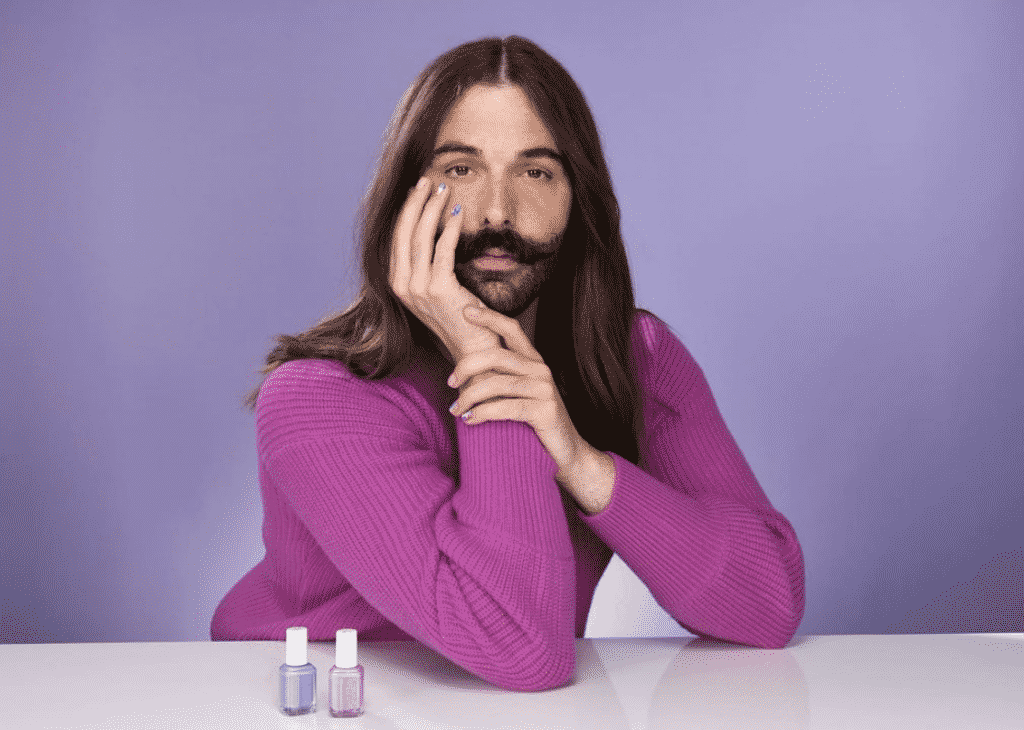
Bumble
What they did: Dating app Bumble’s “Find Me on Bumble” campaign highlighted a diverse group of real-life Bumble users, including people of different genders, races, abilities, religions, and sexualities, referring to them as “the most inspiring people we’ve encountered in NYC.”
What we can learn from them: By celebrating their diverse user base, Bumble sends the message to their audience that they embrace the diversity that exists in our reality. This is an example of the Coca-Cola hilltop ad type of inclusive marketing, which makes consumers feel seen and appreciated by reflecting and honoring various people of different backgrounds. You can emulate this approach by ensuring that any marketing materials you release, from your Instagram posts to your video ads, show a diversity of people – and do so in a celebratory way.
Microsoft
What they did: Microsoft’s 2018 “We All Win Campaign” showcased the way that customers with disabilities could use and enjoy their new Xbox Adaptive Controller, made with touchpads and bright colors for easy use by the visually impaired.
What we can learn from them: Yes, Microsoft made an excellent ad for this product showing its value, but, even more importantly, they made an inclusive product that was more accessible than prior controllers.
This is a powerful example of a company going beyond surface-level inclusive marketing to really prove that they valued inclusivity enough to truly invest in it. So if you’re not already doing so, consider how you might be able to make your products more accessible and inclusive. The inclusive ads you then create to market said products will be much more effective.
Sephora
What they did: In their 2021 “Try Something Good” campaign, Sephora highlighted Black-owned beauty businesses to their audience of cosmetics consumers. Not only did the ad show women of different races and ages, but it also went one step further to make a real effort to close systemic gaps by highlighting the Black-owned brands.
What we can learn from them: Being an ally to marginalized communities goes beyond representation; your business can also take a stand by making an effort to support communities who need it.
Think about whether there might be a way to spread the love to diverse brands and marginalized individuals while marketing your business. For example, maybe the following ad for your creative writing app can showcase a poet of color using your product. That way, you’re doing double-duty: marketing your business while also propping up people from marginalized communities.
Axe
What they did: In 2016, Axe Body Spray launched a unique ad campaign that widened a standard definition of masculinity while showcasing men of different races and body types. In the ad, they say, “Who needs some other thing, when you’ve got your thing,” celebrating a diversity of different kinds of people and forms of self-expression.
What we can learn from them: Many men’s toiletry brands (even Axe) have traditionally leaned into stereotypical ideas of masculinity in their marketing. Still, Axe’s decision to twist their previous approach and challenge typical notions of gender was refreshing and much more inclusive.
If your industry had a tendency to use stereotypes or only cater to customers who fit into a specific type, can your business be the one to break the mold and show other consumers that they matter, too?
Let’s say your small business serves college students by selling affordable textbooks. If you use older students in your marketing, you’ll challenge the stereotype that only young people can and should better themselves by getting a degree, making nontraditional students feel welcomed and seen.
Adobe
What they did: As more brands feature inclusive imagery in their advertising, Creative tool Adobe committed to expanding diversity and inclusion. One look at Adobe’s Instagram, and you understand that they took their commitment seriously. Adobe’s colorful Instagram feed highlights artists from different races, genders, sexual orientations, and more.
What we can learn from them: Adobe’s subtle yet powerful use of inclusive content on their social media pages is something we should all strive for. Without creating a campaign dedicated wholly to inclusivity, the company drives diversity as a fluid element in its social media presence.
Take a look at your Instagram feed, does the content you share embrace humans in all their shapes, sizes, colors, and genders? Where can you put in that extra effort to create content that makes everyone feel seen and represented?

Pampers
What they did: In this lighthearted commercial, John Legend and Adam Levine are shown changing the diapers of their children, joined in a song about the struggles of an eclectic group of fathers, all holding their babies. The ad aims to reach new dads and male caregivers who know that diaper duty isn’t just a task left only for mothers.
What we can learn from them: Sometimes, the apparent works when it comes to smashing gender stereotypes. Pampers is joining in on the conversation about gender roles regarding parenting, and they’re doing an excellent job at it.
Where can you take your products or services and use them to break stereotypes? What kind of content can you create for your audiences that will have them perceive your business as one that understands the development and change of society, no matter how obvious it may be.
Ready to Create Inclusive Content?
Now that you’ve been inspired by these brands, we hope you begin incorporating inclusivity and diversity in your marketing efforts. Building an inclusive brand and creating inclusive content requires intentional effort. And while putting in that extra step may seem daunting, with the help of Promo, it will prove more than worth your while as it will serve and impact your business significantly.
